December 2025

The global non-invasive blood glucose monitoring system market size is calculated at USD 34 million in 2024 and is expected to be worth USD 316.65 million by 2034, expanding at a CAGR of 25% from 2024 to 2034, as a result of rising diabetes prevalence and repeated diabetic complications.
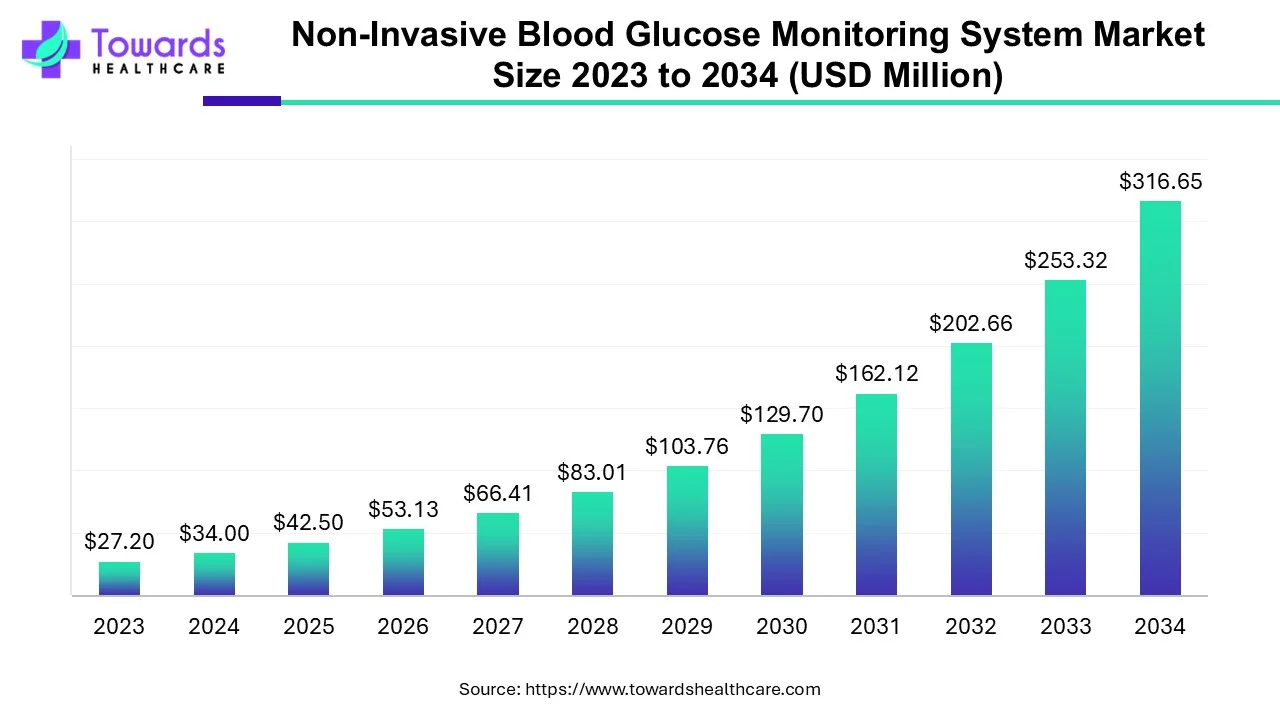
The increasing demand for convenient and pain-free glucose monitoring solutions drives the impressive growth
A non-invasive blood glucose monitoring system is a medical device used to measure blood glucose levels without the need for traditional fingerstick blood sampling. Unlike conventional glucose monitoring methods that require a small blood sample obtained through a finger prick, non-invasive systems provide a painless and convenient way to monitor glucose levels.
Non-invasive blood glucose monitoring systems use various technologies to measure glucose levels through alternative methods, such as spectroscopy, optical coherence tomography, and transdermal sensing. These technologies enable the device to analyze the glucose concentration in the body using different signals, such as light or electromagnetic waves, without the need for invasive procedures. The non-invasive blood glucose monitoring system market is a rapidly growing segment of the healthcare industry. This market is driven by the increasing prevalence of diabetes worldwide and the need for convenient and painless glucose monitoring solutions.
The rising global burden of diabetes is a significant health challenge affecting millions of people worldwide. According to the WHO, approximately 830 million individuals globally are living with diabetes. The Institute for Health Metrics and Evaluation predicts that the number will increase to 1.3 billion people by 2050.
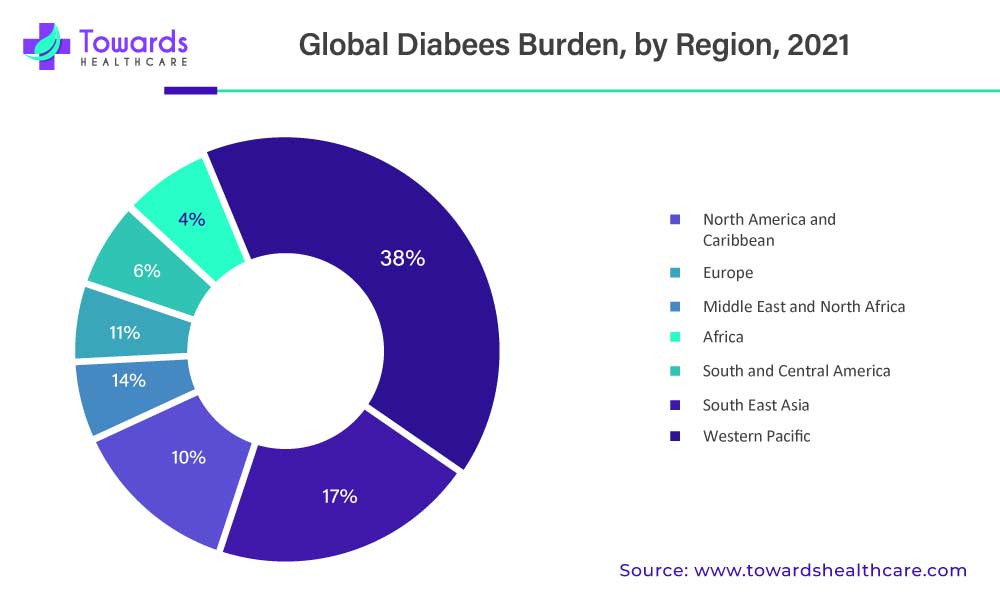
The consequences of diabetes can be severe, leading to various complications such as cardiovascular diseases, kidney damage, nerve damage, and vision problems. Managing diabetes effectively is crucial to prevent or delay these complications and improve overall quality of life.
The rising global burden of diabetes has a significant impact on healthcare systems and economies worldwide. The direct costs of diabetes management, including medications, monitoring devices, and healthcare services, are substantial. Indirect costs, such as loss of productivity and disability, further contribute to the economic burden of diabetes. Addressing the global burden of diabetes requires a comprehensive approach that includes prevention, early diagnosis, and effective management. Lifestyle modifications, such as adopting a healthy diet, increasing physical activity, and maintaining a healthy weight, play a vital role in preventing or delaying the onset of type 2 diabetes.
Furthermore, access to quality healthcare services and affordable diabetes management options is crucial. This includes regular screenings, diabetes education, access to medications and monitoring devices, and ongoing support for self-management. Thus, the rising global burden of diabetes is a significant public health concern. Efforts to prevent, diagnose, and manage diabetes are essential to reduce the impact of the disease on individuals, healthcare systems, and societies as a whole. By addressing the underlying risk factors and promoting effective management strategies, it is possible to mitigate the burden of diabetes and improve the health outcomes for those affected by the disease.
The convenience and ease of use of non-invasive blood glucose monitoring systems play a crucial role in driving market growth, especially for individuals managing chronic conditions such as diabetes. These devices offer a less invasive alternative to traditional finger-prick methods for monitoring blood glucose levels, providing greater convenience and improved user experience. Non-invasive blood glucose monitoring systems offer the advantage of eliminating frequent finger pricks by utilizing innovative technologies to measure glucose levels without blood samples.
The non-invasive nature of these monitoring systems allows individuals to monitor their blood glucose levels more frequently and easily. This frequent monitoring enables better self-management of diabetes or other chronic conditions, as individuals can make timely adjustments to their diet, medication, or lifestyle to maintain optimal blood glucose control.
Moreover, non-invasive blood glucose monitoring systems often provide real-time or continuous glucose monitoring, allowing individuals to track their glucose levels throughout the day and identify trends or patterns. This comprehensive data can help individuals and healthcare professionals make informed decisions regarding treatment plans and adjustments.
The convenience and ease of use offered by non-invasive blood glucose monitoring systems also contribute to increased patient adherence and engagement in self-management. With simpler and less intrusive monitoring methods, individuals are more likely to incorporate regular monitoring into their daily routine, leading to better disease management and improved outcomes.
The growing emphasis on patient-centered care and self-management of chronic conditions further drives the demand for non-invasive blood glucose monitoring systems. These devices empower individuals to take an active role in their healthcare, promoting a sense of autonomy and control over their condition.
Thus, the convenience and ease of use provided by non-invasive blood glucose monitoring systems are key drivers of market growth. The ability to monitor blood glucose levels without frequent finger pricks, coupled with real-time or continuous monitoring capabilities, enhances self-management of chronic conditions such as diabetes. These devices offer individuals greater convenience, improved user experience, and increased engagement in self-care, ultimately contributing to better overall health outcomes.
While non-invasive blood glucose monitoring systems offer several advantages, including convenience and ease of use, there are concerns regarding their accuracy and reliability. These concerns have an impact on the adoption and widespread use of these devices in the market. One of the primary concerns is the accuracy of non-invasive blood glucose measurements compared to traditional invasive methods. Achieving accurate and reliable glucose measurements through non-invasive means can be challenging due to various factors, such as interferences from body tissues, motion artifacts, and individual physiological variations. The accuracy of these devices is crucial for individuals to make informed decisions about their diabetes management, including medication dosages and dietary adjustments.
Another concern is the variability in performance among different non-invasive blood glucose monitoring systems. There can be differences in the technology used, measurement algorithms, and calibration processes, leading to varying levels of accuracy and reliability across devices. Standardization and regulatory oversight are essential in addressing this concern and ensuring that these devices meet specific performance criteria. Additionally, the effectiveness of non-invasive blood glucose monitoring systems may vary based on factors such as skin conditions, body temperature, and individual factors. Some individuals may have skin conditions or characteristics that affect the accuracy of the measurements, which can limit the applicability of these devices for certain individuals or populations.
To address these concerns, ongoing research and development efforts are focused on improving the accuracy and reliability of non-invasive blood glucose monitoring systems. Advancements in sensor technologies, data processing algorithms, and calibration methods aim to enhance the performance of these devices and reduce variability among different products.
Regulatory bodies play a crucial role in ensuring the accuracy and reliability of non-invasive blood glucose monitoring systems. They establish standards, guidelines, and validation processes that manufacturers must comply with to demonstrate the accuracy and performance of their devices. Additionally, healthcare professionals and individuals using these devices need to be educated and aware of the limitations and considerations when interpreting non-invasive glucose measurements.
Thus, while non-invasive blood glucose monitoring systems offer convenience and ease of use, concerns regarding accuracy and reliability remain. Addressing these concerns through technological advancements, standardization, and regulatory oversight is vital for increasing confidence in the accuracy and reliability of these devices. This will ultimately contribute to their wider adoption and integration into diabetes management strategies.
By technology, the spectroscopy segment dominated the market in 2023. Spectroscopy technology is a non-invasive blood glucose monitoring technology to measure glucose concentration in patients in real-time. The spectroscopy method includes the use of ultrasonic waves, near-infrared (NIR), and visible light. It offers numerous advantages such as accurate and timely detection of blood glucose, reduced medical costs, and relief of patients from pain caused due to frequent sampling. Due to these advantages, the segment is estimated to grow well during the forecast period.
By end-user, the homecare segment accounted for a considerable share of the market in 2023. The growing demand for point-of-care diagnostics, increasing geriatric population, and technological advancements augment the segment’s growth. The adoption of wearable devices and portable systems for continuously measuring blood glucose increases their use in homecare settings. The demand has also increased due to the affordability and enhanced accuracy of at-home devices.
By modality, the non-wearable segment led the global market in 2023. The demand for non-wearable devices is due to the reduced cost and the presence of key players.
By modality, the wearable segment is expected to grow at the fastest rate in the market during the forecast period. The rising preference for continuous glucose monitoring, increasing use of mobile devices and applications, and rapid innovations boost the segment’s growth.
By distribution channel, the retail sales segment held a dominant presence in the market in 2023. Retail sales track consumer demand by knowing their preference. Consumers can choose from a wide range of options available. The segment growth is also attributed to special discounts and demand for prescription products.
In North America, particularly in the United States, non-invasive blood glucose monitoring is a significant area of focus in diabetes management. The region is witnessing a growing demand for non-invasive devices that offer a convenient and pain-free alternative to traditional fingerstick testing.
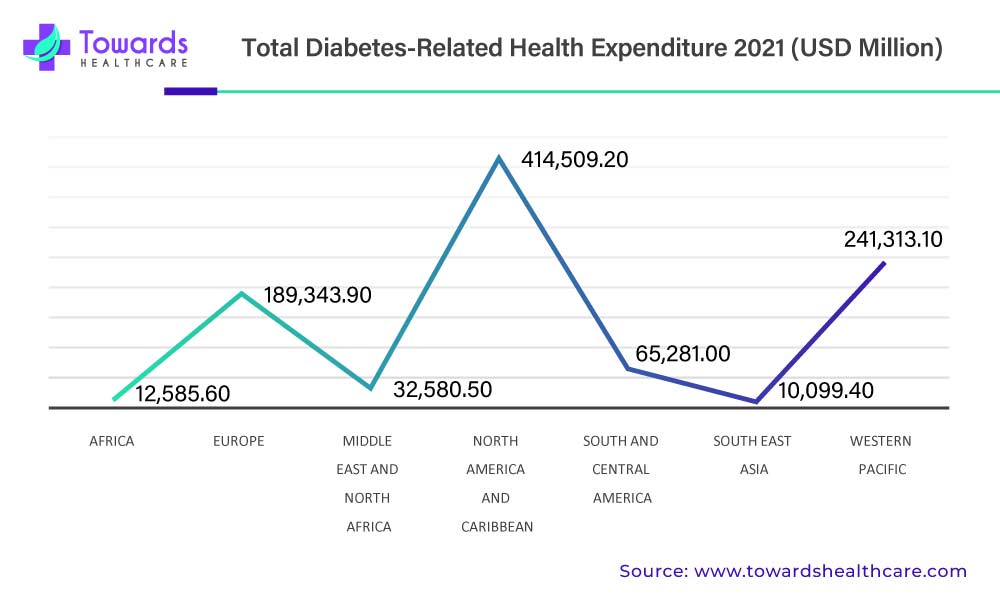
The United States has a high prevalence of diabetes, with millions of individuals requiring regular monitoring of their blood glucose levels. Non-invasive blood glucose monitoring systems provide an attractive solution by eliminating the need for invasive procedures, such as pricking the finger for blood samples. Non-invasive devices in the US market are driven by factors such as convenience, ease of use, and improved adherence to monitoring regimens, as they offer pain-free and frequent glucose monitoring options for individuals with diabetes.
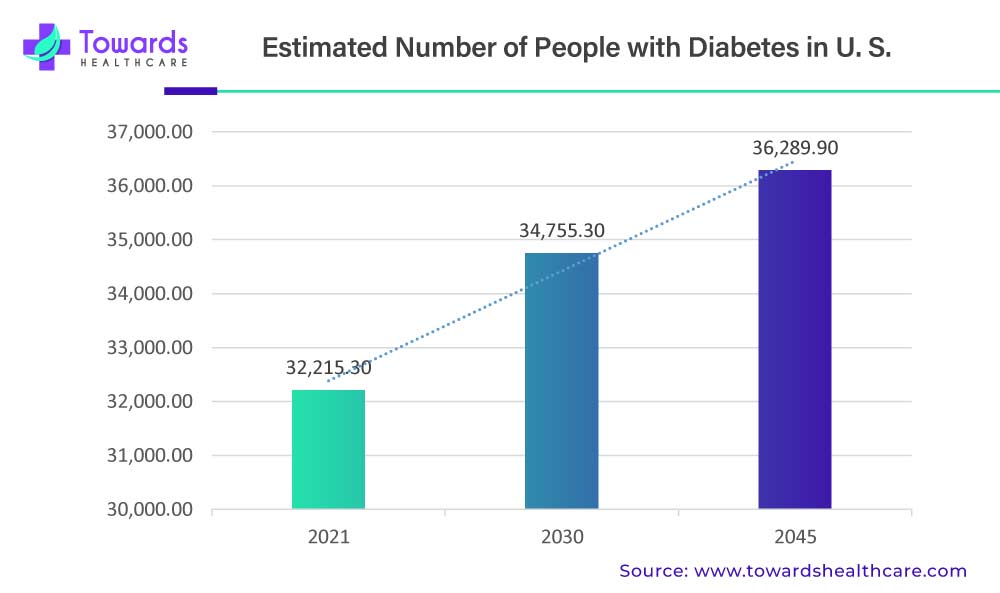
Asia Pacific region is projected to register the fastest growth over the forecast period. In the Asia Pacific region, non-invasive blood glucose monitoring systems are gaining traction as a promising approach to diabetes management. The region is witnessing a significant rise in the prevalence of diabetes, driving the demand for convenient and non-invasive monitoring solutions.
Europe is a notably growing region in the non-invasive blood glucose monitoring system market due to increasing diabetes prevalence, rising awareness about preventive healthcare, and strong support from healthcare authorities. The region's aging population and growing demand for painless, user-friendly diagnostic tools further fuel market growth. Governments and health organizations are promoting advanced technologies for diabetes management, driving investments in R&D. Additionally, the presence of major medical device manufacturers and favorable regulatory frameworks enhances product innovation and adoption. Collaborations between research institutions and companies also accelerate the development of reliable non-invasive solutions, making Europe a significant player in this expanding market.
Technological advancements in non-invasive blood glucose monitoring systems are creating fascinating opportunities in the market. These advancements are driven by the continuous innovation in sensor technologies, data processing algorithms, and device design, enabling more accurate and reliable glucose measurements without the need for invasive procedures.
The development of miniaturized and wearable devices presents a significant opportunity in blood glucose monitoring, providing convenience, portability, and real-time data analysis for individuals managing diabetes. The integration of non-invasive blood glucose monitoring systems with digital health technologies, such as AI and IoT, offers the opportunity for advanced data analytics and personalized feedback, enhancing the capabilities of glucose monitoring and providing deeper insights into overall health.
Furthermore, the development of non-invasive blood glucose monitoring systems that require minimal calibration or calibration-free technologies presents a promising opportunity. Simplifying the calibration process reduces the burden on individuals and healthcare providers, making the devices more user-friendly and accessible. Calibration-free technologies aim to provide accurate glucose measurements without the need for frequent calibration, enhancing convenience and user experience.
Additionally, technological advancements are enabling continuous glucose monitoring (CGM) capabilities in non-invasive devices. CGM systems provide real-time glucose data and trend information, offering valuable insights into glucose fluctuations and enabling proactive diabetes management. The integration of CGM features into non-invasive monitoring systems eliminates the need for frequent fingerstick testing, providing a more seamless and comprehensive monitoring experience.
Moreover, advancements in data connectivity and interoperability are creating opportunities for seamless integration with electronic health records (EHR) and telehealth platforms. This integration allows healthcare providers to remotely monitor and manage their patients' glucose data, enhancing patient care, and enabling more personalized treatment plans. Thus, technological advancements in non-invasive blood glucose monitoring systems are opening up fascinating opportunities in the market. The development of miniaturized wearable devices, integration with digital health technologies, simplified calibration processes, continuous glucose monitoring capabilities, and enhanced data connectivity are transforming the landscape of diabetes management. These opportunities hold great potential in improving the quality of life for individuals with diabetes and revolutionize diabetes care.
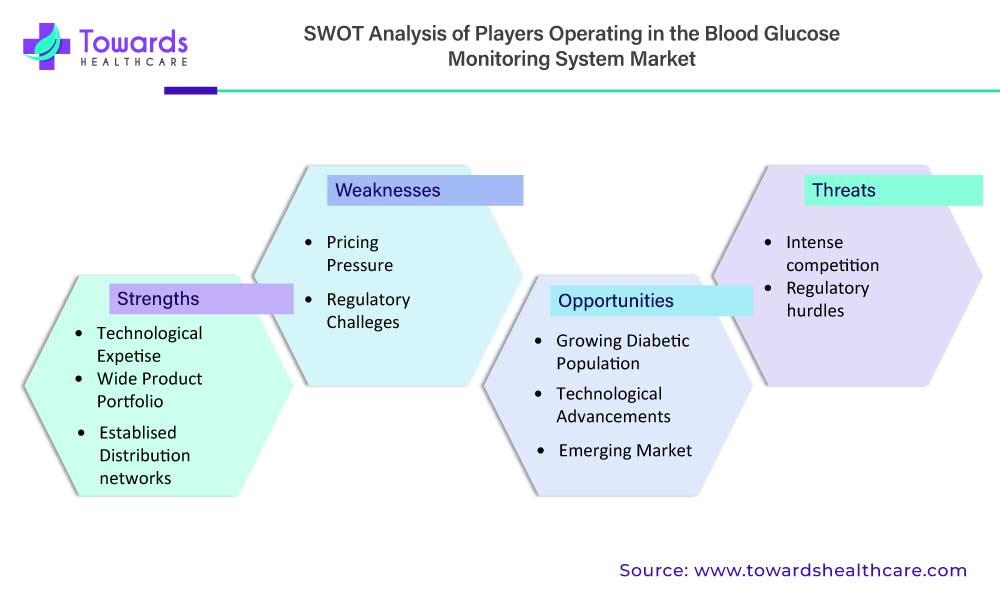
The competitive landscape of the blood glucose monitoring system market is characterized by a mix of established players and emerging companies, indicating a fragmented market structure. The market players employ various strategies to gain a competitive edge and enhance their market position. These strategies include product innovation and development, strategic partnerships, collaborations, mergers and acquisitions, and geographical expansions. Established players focus on expanding their product portfolios through continuous research and development, while also emphasizing marketing and distribution channels to maintain a strong market presence. Emerging companies often concentrate on developing technologically advanced and cost-effective solutions to challenge the existing players.
Hon Pak, M.D., Head of Samsung Electronics’ Digital Health Team, recently announced in an interview that Samsung is striving to add non-invasive blood sugar monitoring to its consumer health devices. He predicted the project to be completed within the next five years. He also added that the company is putting significant investment into bringing continuous blood pressure and glucose monitoring together
By Technology
By End User
By Modality
By Distribution Channel
By Geography
December 2025
December 2025
December 2025
November 2025